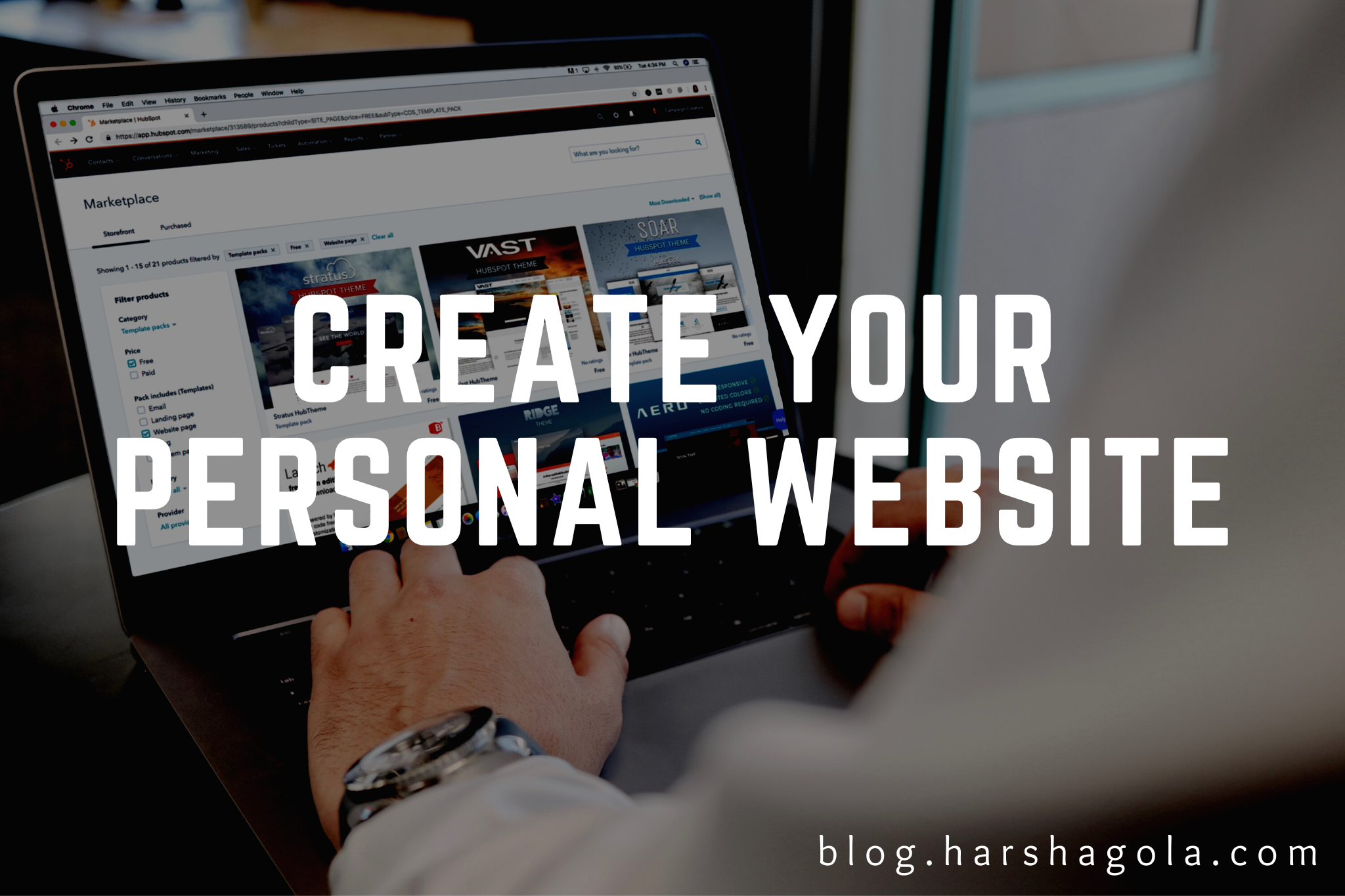Create a Personal Website in 2023: The Complete Guide No BS
 Harsh Agola
Harsh Agola
Having a personal website is crucial in today's digital age. It allows you to showcase your skills, promote your business, and express yourself online. With the right tools and platforms, creating a personal website is easier and more accessible than ever before. In this ultimate guide, we will walk you through the process of creating a personal website using some free and paid options.
Step 1: Choose a Domain Name and Hosting
The first step in creating a personal website is to choose a domain name and hosting. A domain name is the web address that people will use to access your website, and hosting is where your website will be stored so that it can be accessed by anyone on the internet.
Godaddy is a popular domain registrar and hosting provider, known for its easy-to-use interface and reliable service. Alternatively, you can use freenom to buy domain and connect it with InfinityFree Hosting, which provides free hosting services.
Step 2: Set Up Cloudflare
Cloudflare is a content delivery network (CDN) that helps speed up your website and protect it from online threats. Setting up Cloudflare is simple and straightforward. Follow these steps:
- Sign up for a free account on Cloudflare.com
- Add your website to Cloudflare
- Go to the Domain Register for your domain (You can look it up by searching your domain here) and change the Nameservers to the ones provided by Cloudflare. (You may have to scroll down on the page to see this box with the nameservers. Note that you may have different nameservers from those shown here)
- After changing the Nameservers with your domain register, click the “Check” button at the bottom of the page. Note that it may take up to 72 hours for Cloudflare to detect the change.
- Once the nameservers are verified, go to the DNS section of the dashboard.
- In the DNS section, click on the blue “ADD RECORD” button, then choose the “A” record type.
- In a new tab, go to app.infinityfree.net, log in if needed, then select the hosting account you want to add Cloudflare for. Locate the IP address.

Copy the IP address from the client area (app.infinityfree.net) and use it to create the following records: RECORD #1 TYPE: “A” CONTENT: “@” NAME: IP address from app.infinityfree.net
RECORD #2 TYPE: “A” CONTENT: “www” NAME: IP address from app.infinityfree.net
Step 3: Create Your Website using HTML, CSS, and JS
Now that your domain name and hosting are set up, it's time to start creating your website. HTML, CSS, and JS are the three core technologies used to build websites. HTML structures the content, CSS styles the website, and JS adds interactivity.
You can code your own website or else you can use CRM like wordpress to help you with building your personal website.
Step 4: Use Hashnode for Blogging
Hashnode is a blog hosting platform that makes it easy to publish and manage your blog. With Hashnode, you can easily create posts, manage comments, and customize the look and feel of your blog. To use Hashnode for your blog, simply sign up for a free account and create a new blog. Once your blog is set up, start writing posts and publishing them on your website.
To map your subdomain with hashnode follow this article.
Step 5: Publish Your Website
It's time to publish your website! Upload the HTML, CSS, and JS files to your hosting account. If you are using Godaddy, you can use their website builder to upload your files. If you are using InfinityFree Host, you can use FTP to upload your files.
If you are using Wordpress, use softalicious in cpanel to install Wordpress. Follow this article.
Step 6: Promote Your Website
The final step in creating a personal website is to promote it. You can promote your website by sharing it on social media, submitting it to directories, and reaching out to friends and family. To rank higher in search engine results, use search engine optimization (SEO) techniques such as keyword research, meta tags, and content optimization.
Conclusion
Creating a personal website is a great way to showcase your skills, promote your business, or express yourself online. With the right tools and platforms, such as Godaddy, InfinityFree Hosting, Cloudflare, HTML, CSS, JS, and Hashnode, the process of creating a personal website is easier and more accessible than ever before. Follow this ultimate guide, and bring your vision to life. Don't be afraid to get creative and have fun with the process. Happy website building!
Additionally, you can also improve your website's SEO by consistently creating high-quality, keyword-rich content, building backlinks, and using descriptive and relevant alt tags for images. To ensure your website is user-friendly and accessible, consider using responsive design and implementing web accessibility standards.
By following these tips and using the right tools, you can create a personal website that is not only visually appealing but also optimized for search engines, providing you with a strong online presence. Remember, a personal website is a long-term investment, so be patient and dedicated to the process, and your hard work will pay off.
Subscribe to my newsletter
Read articles from Harsh Agola directly inside your inbox. Subscribe to the newsletter, and don't miss out.
Written by
